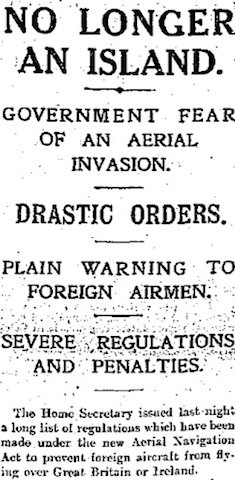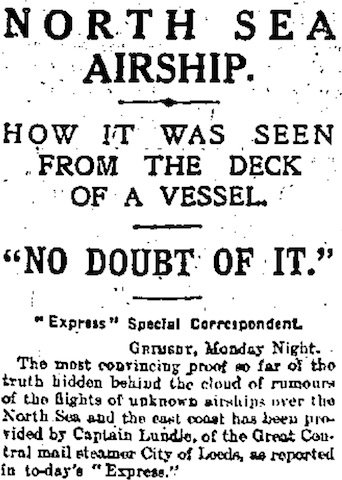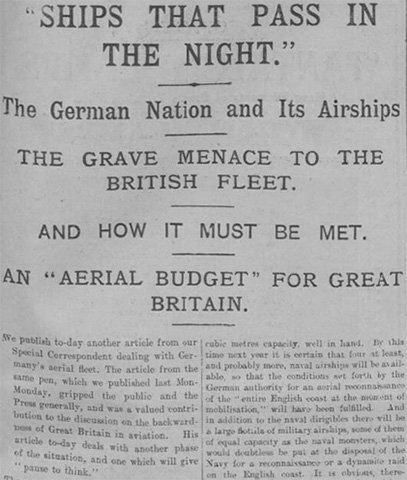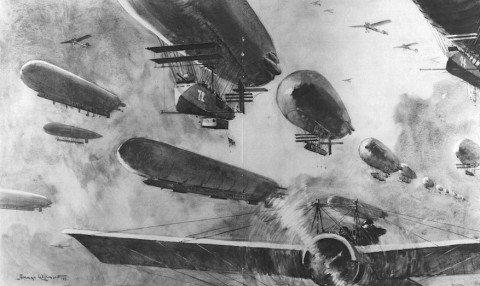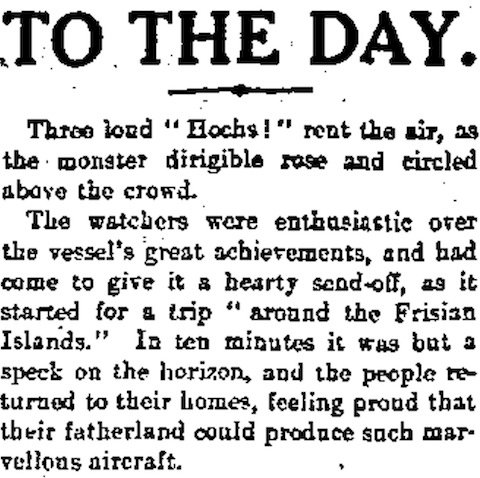
Phantom airships attract relatively little attention in the press today. For the first time in more than a week there are no new sightings to report. Stale (and slightly garbled) news about the Grimsby box kite and the City of Leeds and Othello sightings appear in the Aberdeen Daily Journal and the Western Gazette, while the Manchester Courier once again republishes old content for the benefit of the tiny proportion of its readers who haven't yet read about Captain Lundie's encounter with a dark airship near Grimsby. At least a leading article in the Standard is original in its phrasing, if not in its content. It attacks what it calls 'The anti-defence crusade' of Radicals, for whom 'it really seems as if the mere mention of national defence in any form [is] a source of annoyance and irritation' (p. 8). One important 'Ministerial' newspaper 'talks about "the jingoes of the air" and sneers at the "new and attractive theme" which the aerial peril has provided for them (p. 8).
It has been the cue of these critics all through to maintain that the airship 'scare' was all nonsense, though the hasty publication of the Home Secretary's schedule is a significant testimony to its reality. How many foreign aircraft have passed over these islands during the past few months is doubtful; but that some have been taking a look round at our strategic bases is very well known to the Admiralty.
The Standard, of course, slips in another attack on the new aerial navigation regulations on the basis that there is currently no means of enforcing them. This is also the theme of a leading article, entitled 'The Flying Dutchmen', in the Irish Independent, which paraphrases (sympathetically, though stopping short of endorsement) the argument of 'a section of the English Press' that the regulations are 'absolutely useless if intended for the protection of Great Britain' (p. 4). Among its sources may be the Daily Express, for like that paper it misunderstands the regulations in thinking that they 'only become operative if the airship lands at any of the prohibited areas of British territory':
Thus, if the German airships are really spying out the land the regulations can have no effect unless in case of accident to one of their airships which would compel a landing.
Hence the demand of 'a million sterling for the immediate expansion of the British air fleet'.
...continue reading


